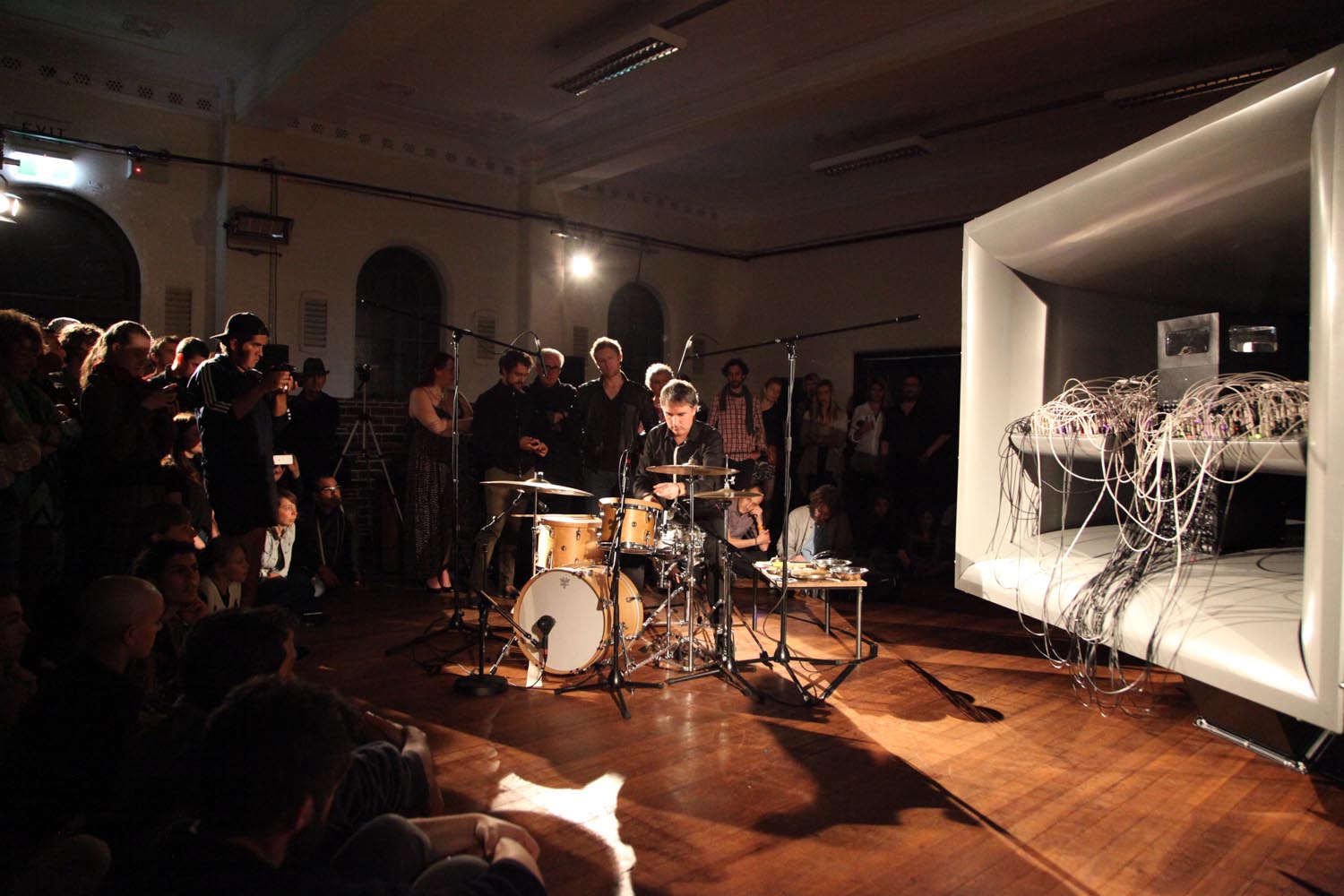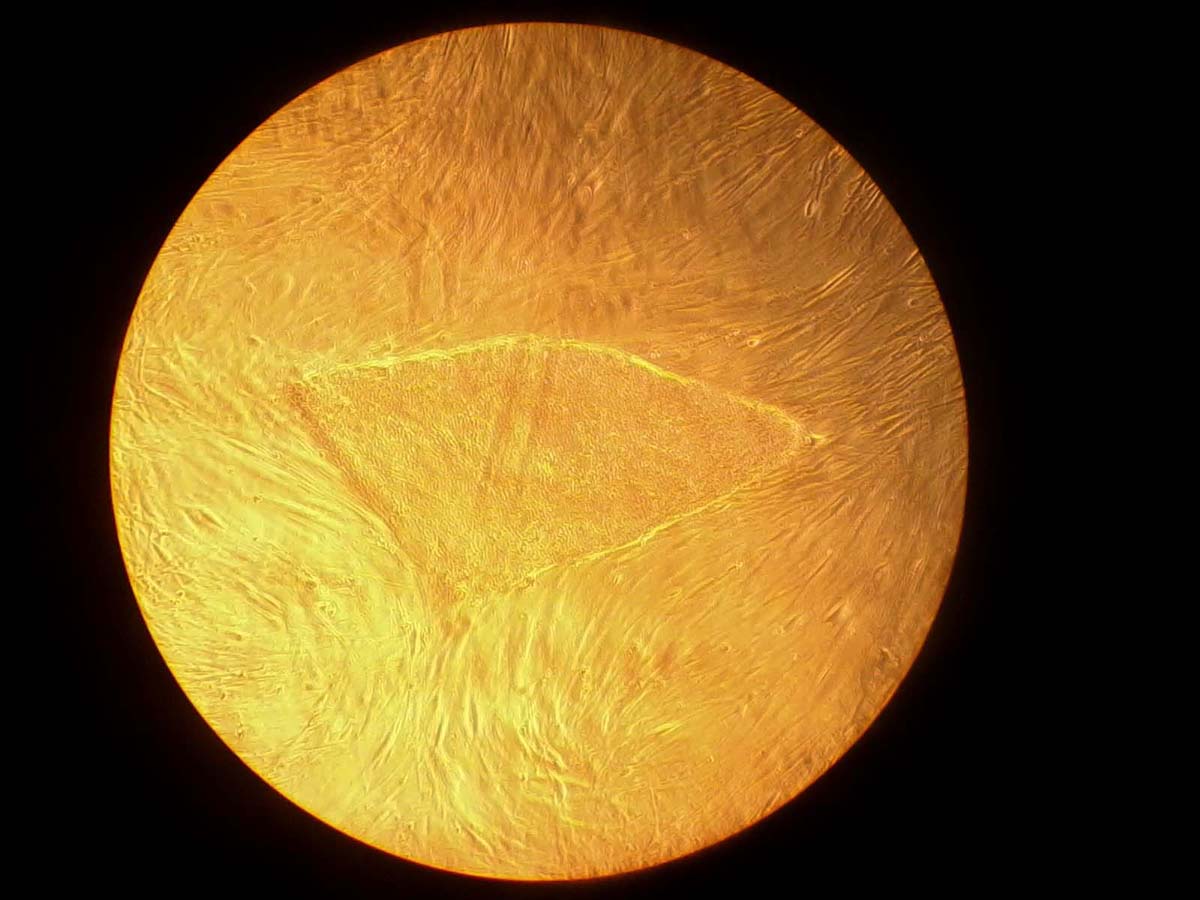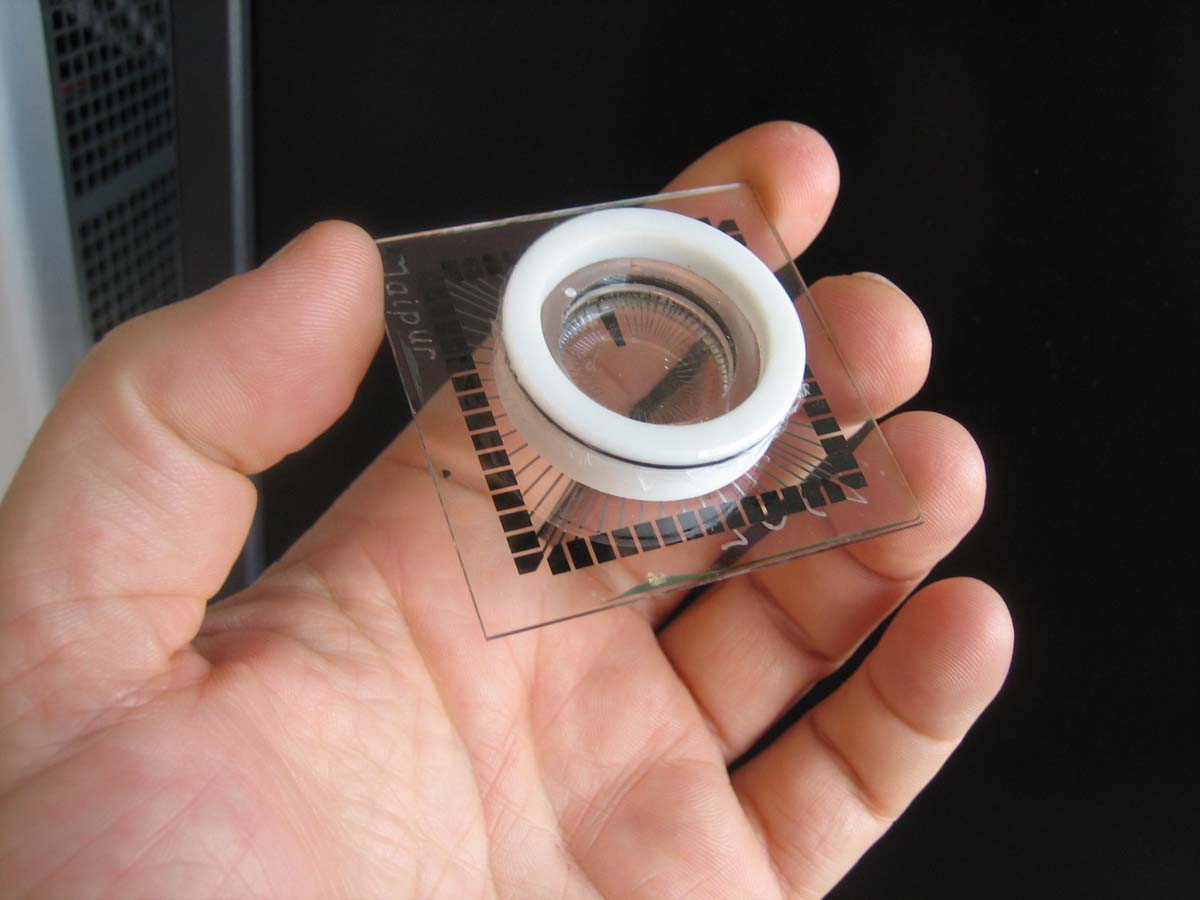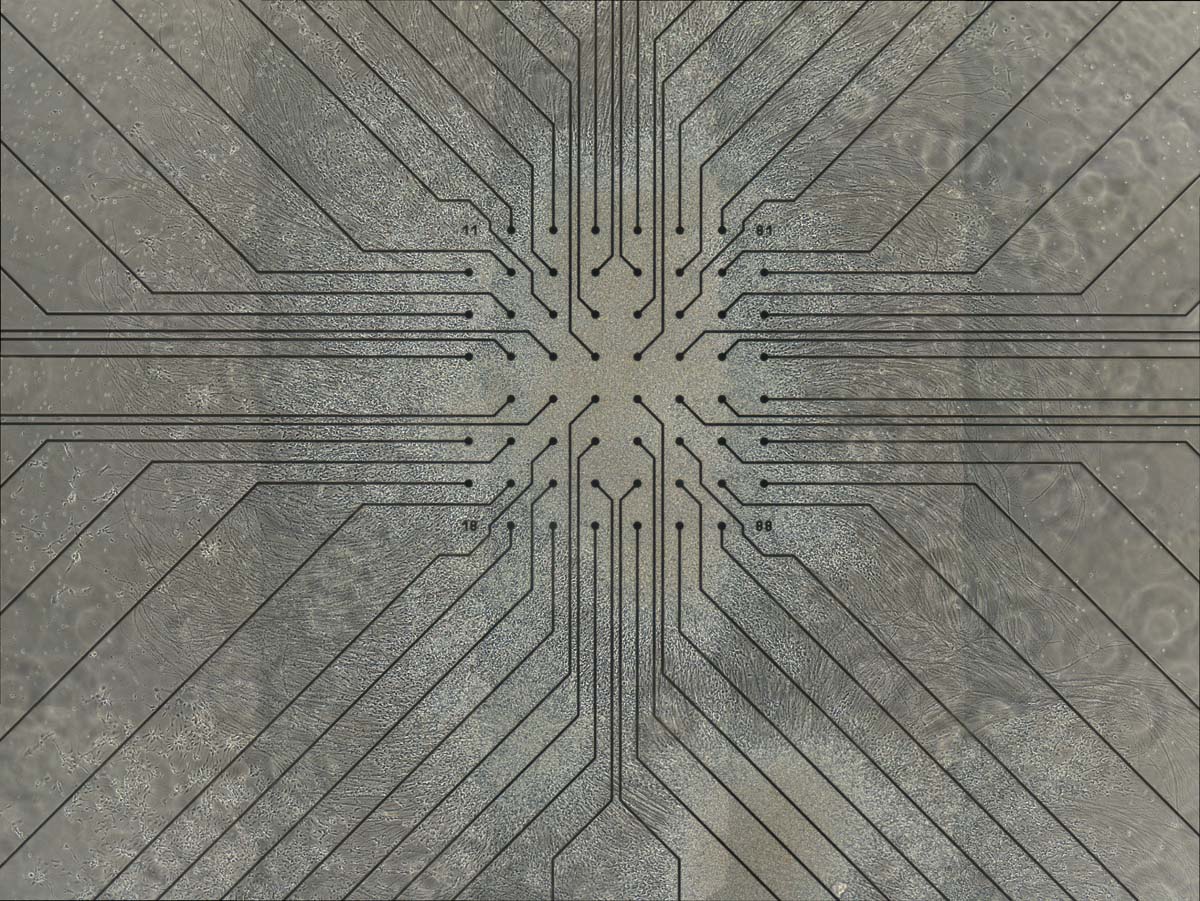
A rock star in a Petri dish
Featuring the world’s first neural synthesizer, artist Guy Ben-Ary and his collaborators will perform at the TodaysArt Festival in The Hague on 21 September. For this performance, he collaborated with the lab of Erik Danen to transform neural stem cells into neural networks on a chip.
Becoming a rock star
Ben-Ary has been working in scientific labs for over twenty years and leads CELLCentral, a biological imaging lab at the University of Western Australia. ‘I’m a researcher at SymbioticA, which is a very special lab in the same University that is run by artists’, Ben-Ary says. At SymbioticA, he creates bio-art. His passion for music and his work on exploring the realms of bio-engineered ‘brains’ have now resulted in cellF: a synthesizer controlled by Ben-Ary’s own neural cells. ‘One of my adolescent dreams was to become a rock star. And now my cells are a rock star in a Petri dish’, he laughs.
Due to the selected cookie settings, we cannot show this video here.
Watch the video on the original website orPost-human jam session
For cellF, Ben-Ary reprogrammed his own skin cells from his forearm into stem cells, which have the ability to differentiate into any desired cell type. For every performance, he collaborates with a local lab to differentiate his stem cells into functional neural networks. These neural networks grow on a chip and contain about 100,000 cells – an average human brain consists of 100 billion cells. The chip sends the electric signals generated by the neurons to an analogue synthesizer, which turns them into music. ‘During a cellF performance, musicians play live together with the synthesizer’, says Ben-Ary. ‘The chip receives direct feedback from the musicians, stimulating the cells. So, we create some sort of post-human jam session.’
Art & music
For his upcoming show, Ben-Ary teamed up with Erik Danen to grow stem cells into a neural network on a chip. Since working with his own genetically modified stem cells was not allowed in the Netherlands, in this case non-modified neural stem cells are used, thus creating an ‘alter ego musician’. Danen is Professor of Cancer Drug Target Discovery at the Leiden Academic Centre for Drug Research. There’s an important relation between Ben Ary’s work and work done by his lab, he notes. ‘We aim to mimic healthy and diseased tissues to explore biological principles and find targets for therapy. And Ben Ary makes use of similar techniques, but then to create art and music.’
-

cellF in action -

Ben-Ary's pluripotent stem cells, reprogrammed from his skin cells -

The chip -

Ben-Ary's neurons differentiating on the chip
Make people think
For Danen, it is important for a scientific lab to interact with other disciplines. ‘We are developing technology that could impact regenerative or personalised medicines. There are interesting ethical and philosophical aspects there. I think it’s great that people from other disciplines such as the arts inform a broader public about current technology, and provide a glimpse into a possible future.’ His view matches that of Ben-Ary, who thinks it important to shed a different light on the same subject. ‘With cellF, we make people think about the cultural and ethical sides of these techniques.’
Shifting perceptions
‘Artworks using neurons have the potential to evoke or elicit responses in regards to shifting perceptions surrounding understandings of life’, says Ben-Ary. ‘By bringing possible scenarios to life, neural artworks confront the viewer, both instinctively as well as intellectually. This occurs by calling into question the liveliness of the differential categories of life and death, human and non-human.
In this time lapse movie you see the neural stem cells differentiating into neurons. Neurons are cells that carry electrical impulses, and are found in the human brain and the nervous systems. They connect to each other and thereby form neural circuits, which is happening in the time lapse. The chip registers the electrical impulses from the neurons and transfers this to the analogue synthesizer, which then produces music.
